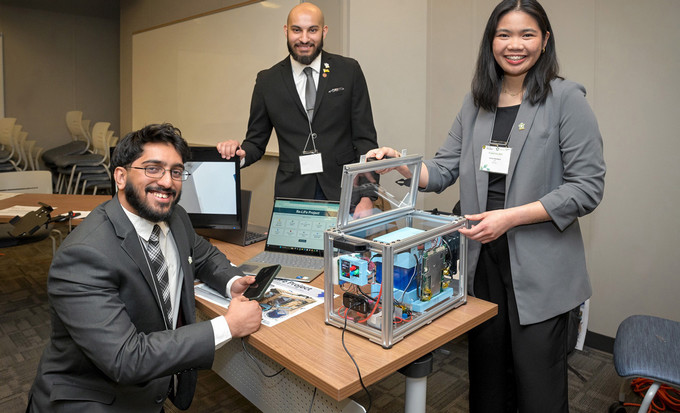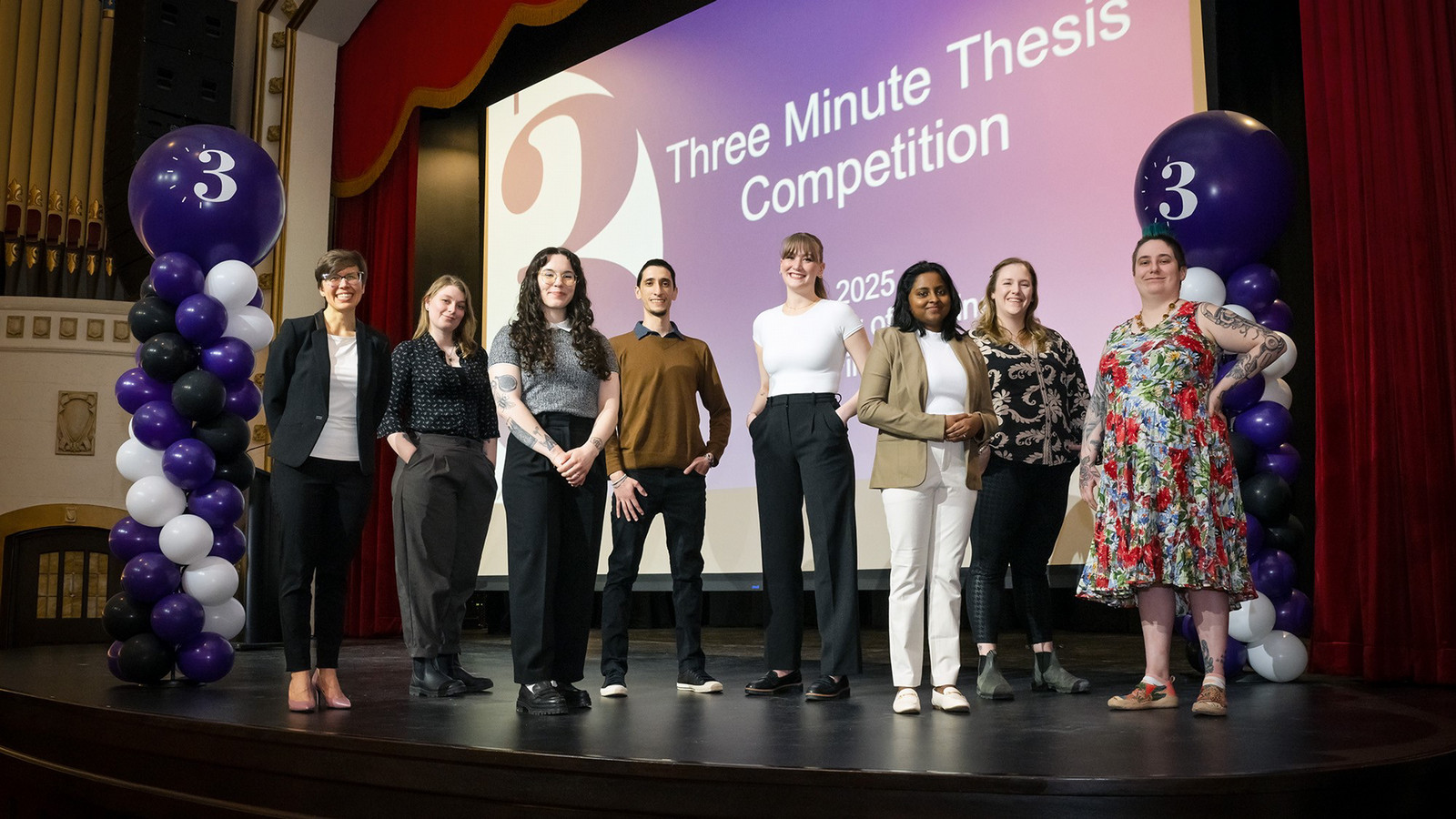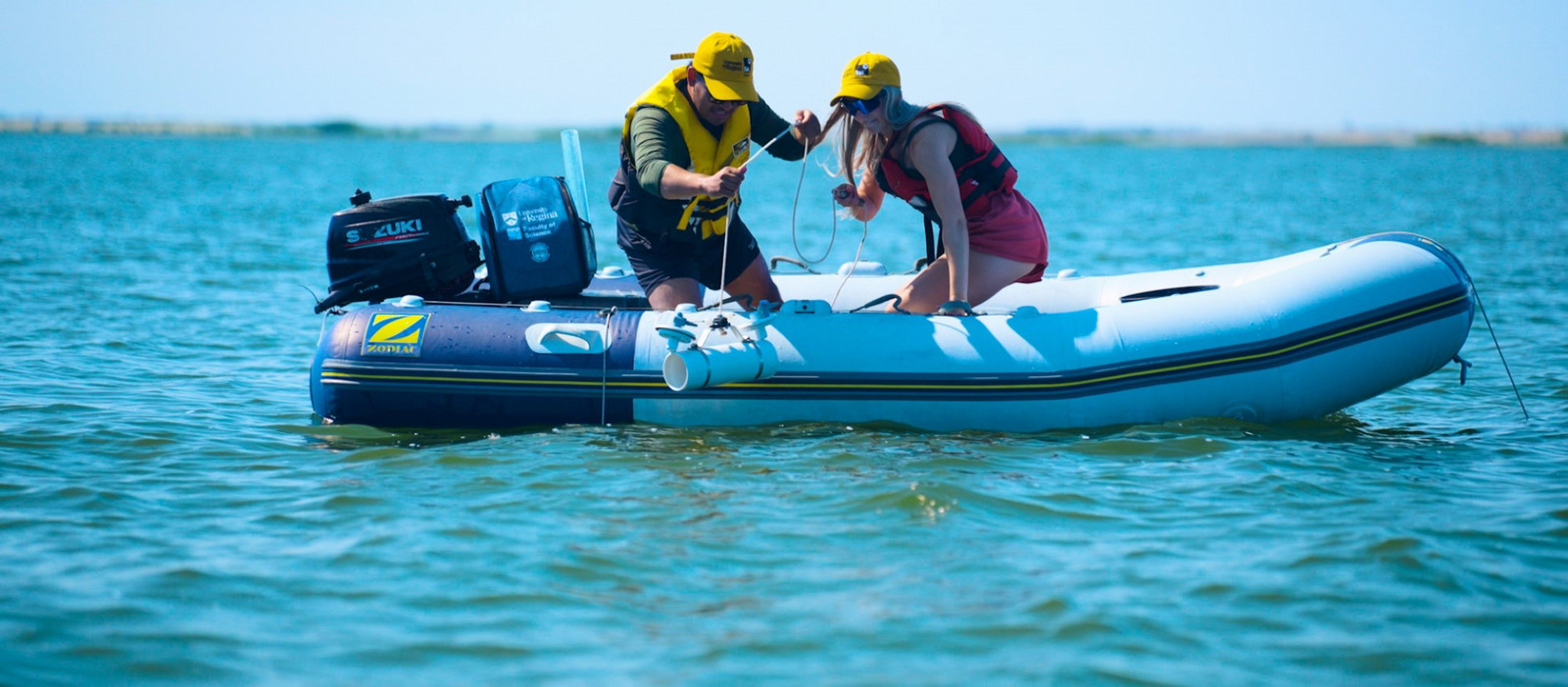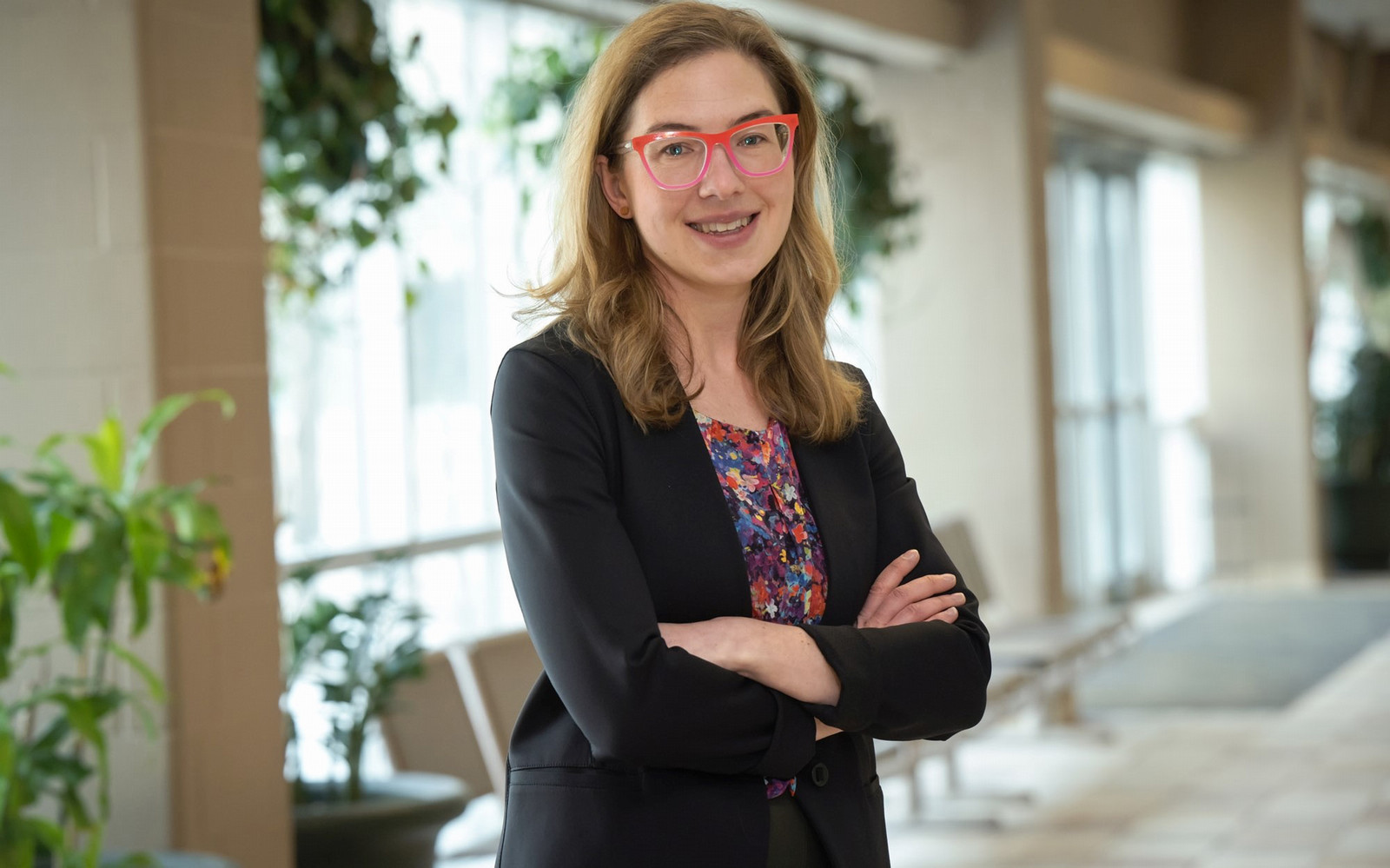Engineering students demonstrated their solutions to real-world problems and challenges at the Faculty of Engineering and Applied Science’s annual Capstone Project Day. Fourth-year students in Electronic Systems, Environmental Systems, Industrial Systems, Petroleum Systems, and Software Systems Engineering put their hard work and ingenuity on display!
IFS DriverAlert
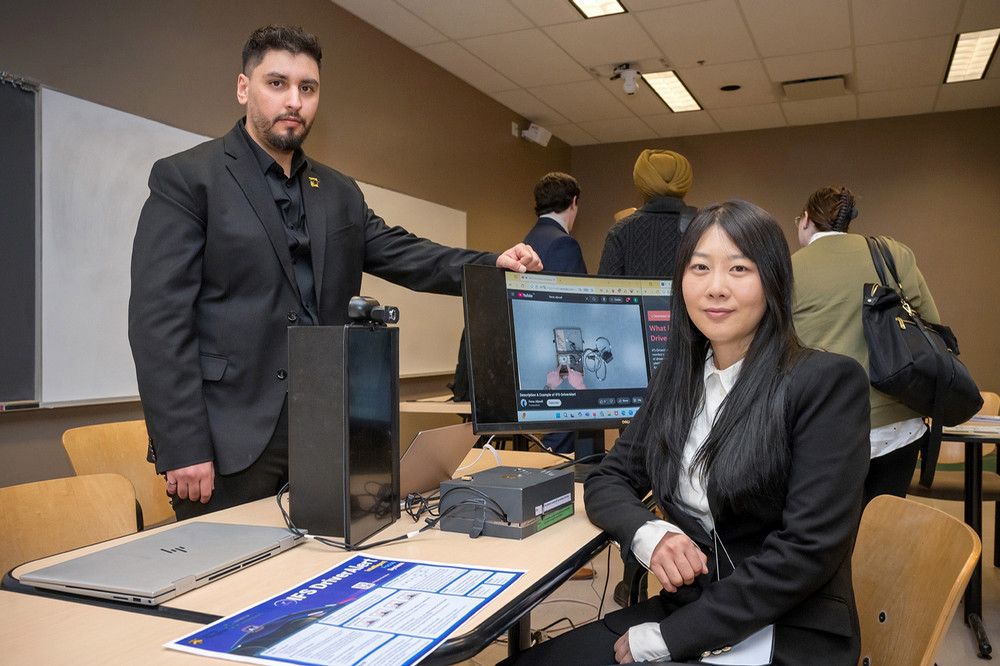
L to R: Ihab Mohamad and Seonyu Park with their project Intelligent Focus System (IFS) DriverAlert (missing: Feras Aljoudi). Credit: University of Regina Photography
Software System Engineering students Feras Aljoudi, Seonyu Park, and Ihab Mohamad’s project Intelligent Focus System (IFS) DriverAlert was designed to tackle a very serious problem – drowsy driving. The system uses a small camera to monitor a driver’s face detect closed eyes, yawning or looking away from the camera when the car is travelling over 20 km/h.
When these drowsy signs are detected, an audio alert is sent through a speaker to warn the driver. If the system fails to detect the car speed, which is rare, an alert will play every 10 minutes to inform the driver that automatic detection is off and recommend turning DriverAlert on manually. The system is designed to be easy to use and affordable, making this important safety feature accessible to as many people as possible.
Saskatchewan has a deep-rooted history in oil and gas production, with oil well and battery sites located all across the province and many, if not all of the sites, require remediation of contamination. We found this specific project of high importance and interest due to the nature of the site being located near a river, with concerns of contaminant transport into the river. — Environmental Systems Engineering student Izaak Sitter
The Power and Energy Optimization of Canola Oil Deodorization
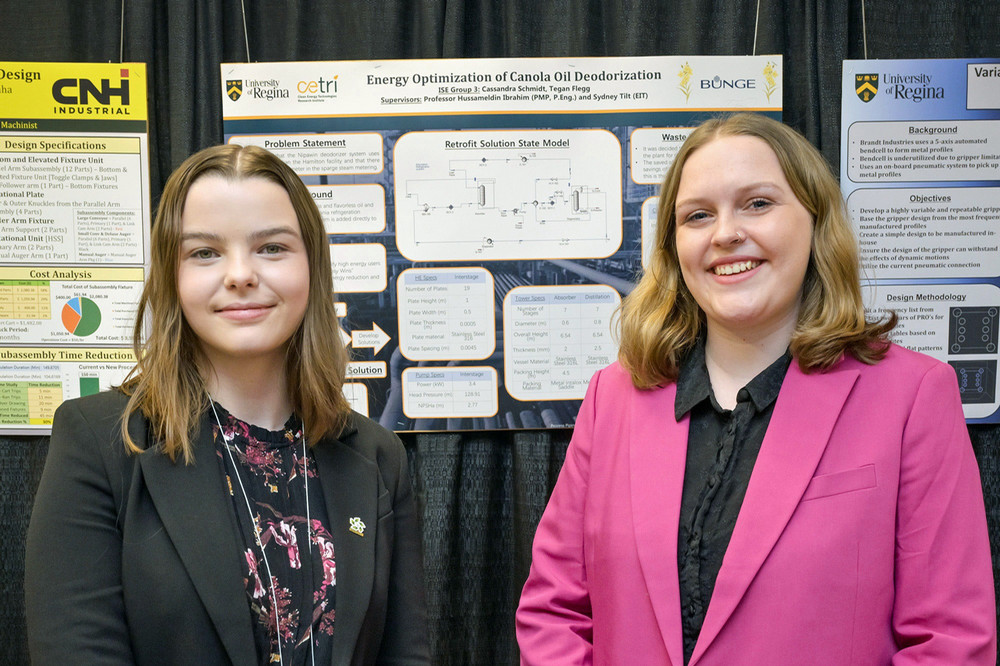
Cassandra Schmidt and Tegan Flegg with their project The Power and Energy Optimization of Canola Oil Deodorization. Credit: University of Regina Photography
Canola Oil manufacturer, Bunge Canada plans to improve energy efficiency at its Nipawin facility by switching to an absorption refrigeration system and implementing smaller energy-saving solutions, which could reduce energy consumption and positively impact the environment. In this project, Industrial System Engineering students Tegan Flegg and Cassandra Schmidt designed a large-scale retrofit of the conventional refrigeration cycle at the Nipawin facility by changing it to an absorption refrigeration system, which will help to decrease the energy consumed by the refrigeration equipment. In addition, they developed several small-scale solutions to aid in the reduction of the energy used which increases energy efficiency and heat transfer rates for the deodorization process.
“We decided to take on this project because Tegan was a past co-op student at Bunge, and we are both interested in the process industry,” says Schmidt. “Energy reduction is important to solve to reduce the greenhouse gas emissions of industrial loads and ensure that the needs of today’s industries are not compromising future generations abilities to meet their needs. “
ReLiFe
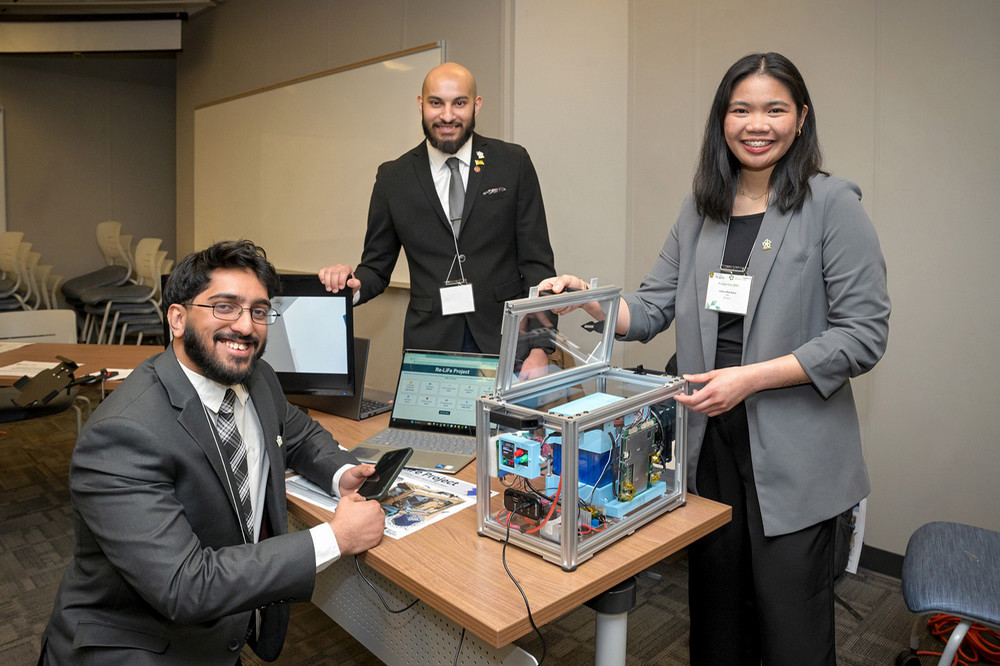
L to R: Shafkat Alam, Shaheer Hasan, and Joshua Mae Bacor with their project ReLife. Credit: University of Regina Photography
Electronic System Engineering students Shaheer Hasan, Joshua Mae Bacor, Shafkat Alam addressed the growing environmental concern of recycling used electric vehicle (EV) batteries by giving them a second life as portable battery banks in their ReLife project.
This initiative aims to model sustainable energy solutions while ensuring safety and functionality. The system employs a Battery Management System (BMS) to monitor and regulate cell performance, ensuring safety and efficiency. Battery status is displayed on integrated screens and on an online database providing an intuitive user interface. ReLife demonstrates a viable approach to extending the life cycle of EV batteries and contributing to a more sustainable and energy-efficient future.
Remedial Design Action Plan for an Abandoned Oil Well and Battery Site
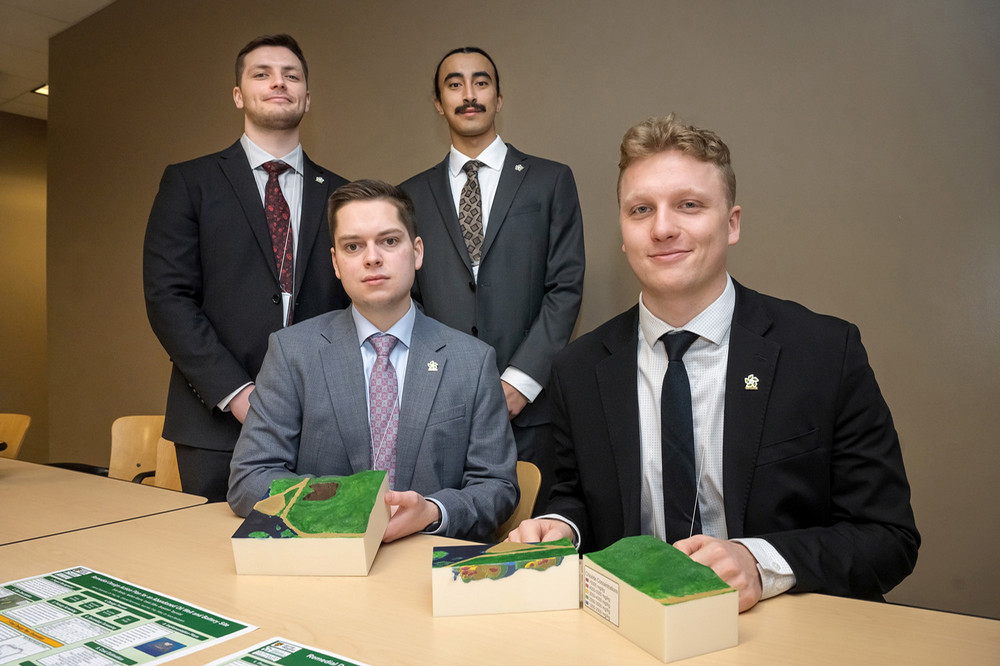
Back L to R: Izaak Sitter and Benjamin Taypotat, Front L to R: Tyler Bosley and Nathan Moore with their project Remedial Design Action Plan for an Abandoned Oil Well and Battery Site. Credit: University of Regina Photography
An oil well site near a river has caused significant salt contamination in the soil. Post abandonment, the site is now of particular concern due to its proximity to a river crossing an international border, large extent, high plume concentration and presence of overlying native prairie vegetation.
To address this, Environmental Systems Engineering students Tyler Bosley, Nathan Moore, Izaak Sitter, and Benjamin Taypotat’s project looks at evacuating contaminated soil and replacing it with clean soil, reducing environmental risks and restoring the land for future use.
“Saskatchewan has a deep-rooted history in oil and gas production, with oil well and battery sites located all across the province and many, if not all of the sites, require remediation of contamination,” says Sitter. “The federal government has allocated funds to aid in the remediation of these sites and this was our group’s motivation for our project. We found this specific project of high importance and interest due to the nature of the site being located near a river, with concerns of contaminant transport into the river.”
Hydraulic Fracturing Effects on Cement Sheath Integrity: A Study in Montney Reservoirs
Petroleum System Engineering students Karan Gumber, Gonzalo Osorio, and Abdulaziz Abdi examined hydraulic fracturing, a widely used technique for enhancing hydrocarbon recovery in unconventional reservoirs, such as the Montney formation. The group evaluated key factors, such as cement mechanical properties, to determine potential failure mechanisms during the hydraulic fracturing operations. Their findings provide insights into optimizing cement slurry design and well-completion strategies to enhance long-term well integrity and minimize environmental risks associated with fluid leakage in unconventional reservoirs.
Do you see yourself presenting your very own Capstone Project one day? Check out the different engineering programs available at the University of Regina!
The final Capstone Projects also replicate what engineering students can expect after their upcoming convocation, when they begin their engineering careers. The projects are a fantastic example of how years of hands-on learning leads to valuable experience and career-ready grads!
Banner photo: Electronic System Engineering students were among the over 30 groups displaying their final capstone projects at Engineering Project Day. Credit: University of Regina Photography
About the University of Regina
2024 marked our 50th anniversary as an independent University (although our roots as Regina College date back more than a century!). As we celebrate our past, we work towards a future that is as limitless as the prairie horizon. We support the health and well-being of our 17,200 students and provide them with hands-on learning opportunities to develop career-ready graduates – more than 92,000 alumni enrich communities in Saskatchewan and around the globe. Our research enterprise includes 18 research centres and 9 Canada Research Chairs. Our campuses are on Treaties 4 and 6 - the territories of the nêhiyawak, Anihšināpēk, Dakota, Lakota, and Nakoda peoples, and the homeland of the Michif/Métis nation. We seek to grow our relationships with Indigenous communities to build a more inclusive future.
Let’s go far, together.
